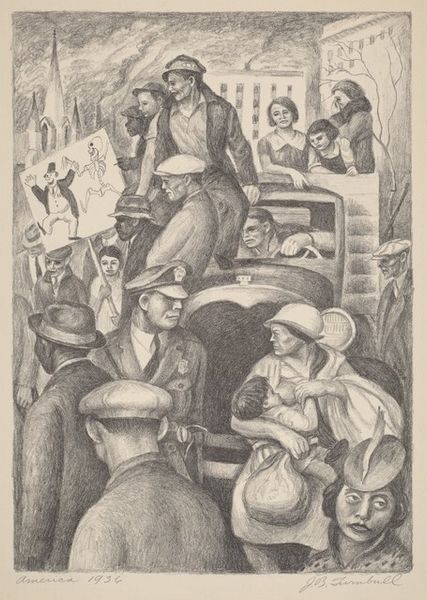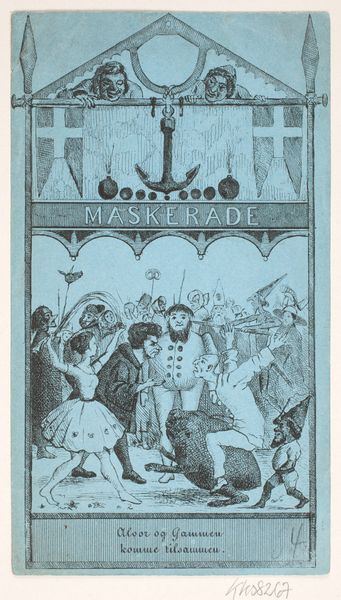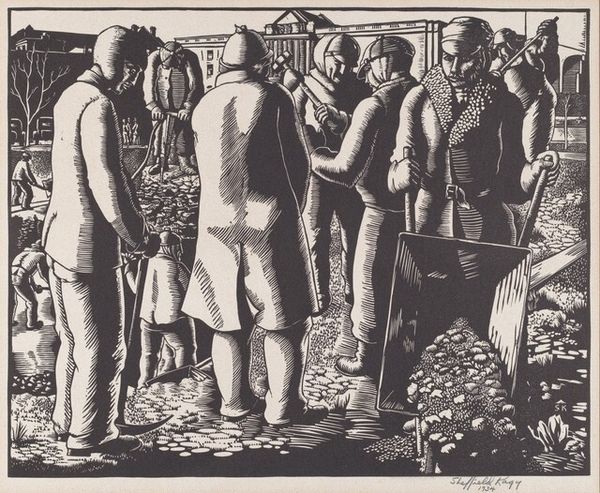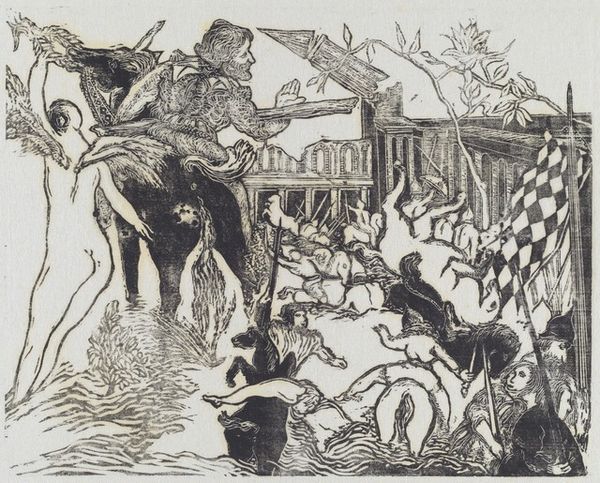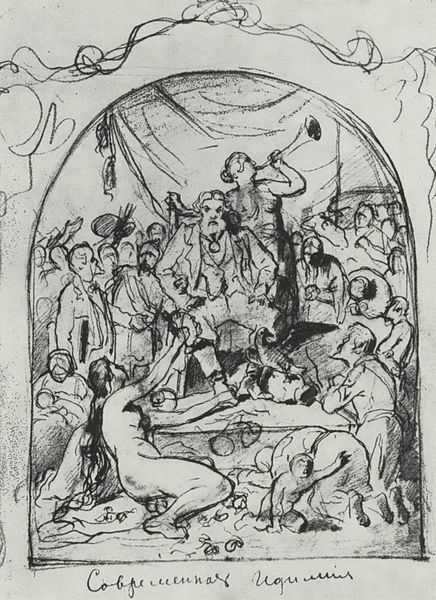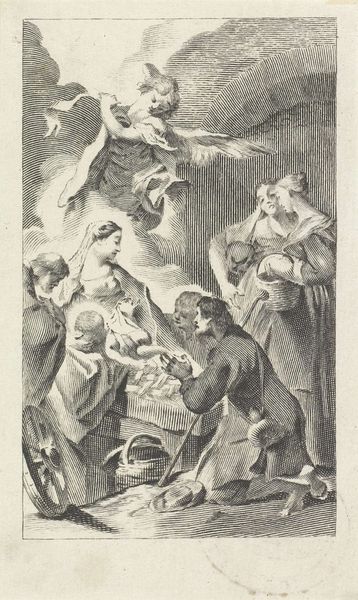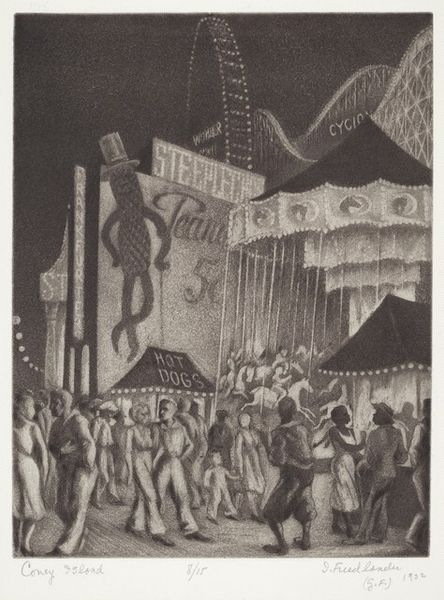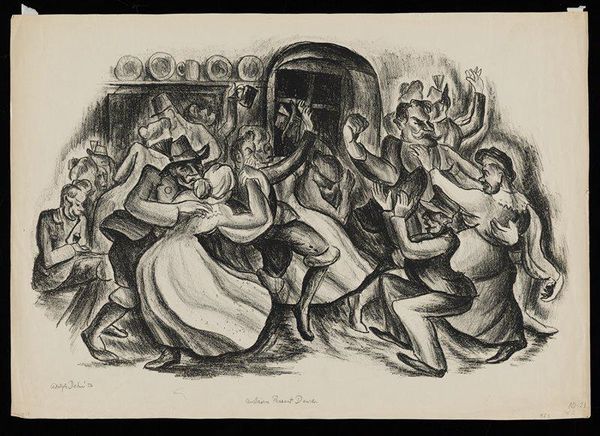
Dimensions: image: 17.78 × 12.38 cm (7 × 4 7/8 in.) sheet: 22.86 × 16.19 cm (9 × 6 3/8 in.)
Copyright: National Gallery of Art: CC0 1.0
Editor: So, this woodcut is titled "Colored Baptizing" by Clare Leighton, created around 1951-1952. It feels like the scene is both intimate and monumental, all these figures crowded together but very clearly delineated in the print. How does the method used to create this print amplify or change its subject matter, do you think? Curator: It's crucial to consider how the material process of woodcut shapes our understanding. Leighton’s choice speaks volumes. The labour-intensive act of carving directly into the wood, removing material to create this striking image of communal worship... it emphasizes a deliberate act of both creation and maybe even resistance. Editor: Resistance? In what way? Curator: Consider the historical context and what you notice about how they appear and gather. Black folks in the US in the early 50s and how public practice and expression took shape then and earlier. The deliberate labor of cutting each line into wood. Also notice how there's not that much tonality to make a realistic setting. What does abstraction allow to be seen when creating religious community? How is this different if they'd commissioned a painting? Editor: I see what you mean! The sharp contrasts and stark lines force you to focus on the figures and the actions, not the environment so much, though a deep natural scene also holds significance. It really puts the ritual front and center...it emphasizes the materiality and construction behind the artwork itself, not just the surface image. Curator: Exactly. Leighton isn't just depicting a scene. She’s using the woodcut itself to emphasize themes around working, sharing of physical practice in community, religious production, and more, that we can consider to build upon ideas and thoughts, too. Editor: So, paying attention to the process helps unlock meaning about both art history and its setting and context. Thanks! Curator: Absolutely. Thinking about art in this way enriches what one might gather by seeing how history can influence all aspects of a project from planning to labor to dissemination.
Comments
No comments
Be the first to comment and join the conversation on the ultimate creative platform.
